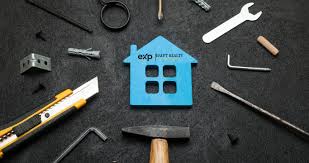Renovation projects offer improvements to a home’s layout, function, and appearance. Strategic phasing work allows you to complete extensive renovations with your budget and lifestyle in mind. Here are some ways to handle budgeting for home renovations:
Create a Detailed Project Plan
Knowing what home elements you plan to replace or renovate can help you estimate the project’s total cost. Renovations may include:
- Flooring
- Fixtures
- Paint
- Hardware
- Appliances
Make sure you keep labor costs separate from specialty costs, such as those for plumbing or electrical work. This may help you prioritize or bypass certain upgrades. Account for permit and inspection fees that may be required for your project. If decor is a key element of your renovation, including artwork, pottery, or other features can improve the accuracy of your estimated cost.
Add a Contingency Buffer
Budgeting for unexpected problems, such as hidden water damage or outdated wiring, can help reduce financial strain during home renovations. Renovations may also uncover surprises like uneven subfloors or inadequate insulation. Including a buffer in your project budget helps make sure the current phase of upgrades can continue without financial interruption.
Larger contingencies are beneficial for older homes, as their building methods and materials may be outdated. Your buffer can also be used to cover temporary living arrangements if your renovations leave parts of the home uninhabitable.
Phase Your Project Strategically
Organizing an extensive renovation project by phase can help verify that key upgrades are met or rooms are redesigned to meet immediate needs. This also allows you to begin renovations even if your budget cannot currently accommodate your entire project plan. When planning renovation stages, review:
- Infrastructure upgrades, such as electrical, plumbing, or foundation work, that impact other project elements
- Exterior work, like painting or window replacement, that can be impacted by seasonal weather
- Extensive renovations might impact daily living, so scheduling may be dependent on hours when few people are at home
To keep some of the house liveable, complete one room at a time before moving on to the next. Providing buffer time between phases creates an opportunity for financial recovery and accounting for unexpected schedule adjustments. Grouping similar work together, such as performing all plumbing tasks in different rooms, usually helps reduce service fees.
Some homeowners prioritize high-return improvements like updating the kitchen or renovating the bathroom. Improved insulation or window replacements offer energy-efficient upgrades. Front door replacements or garage door updates may increase curb appeal. These upgrades often impact a homeowner’s return on investment (ROI), which is beneficial when selling or refinancing a home.
Track Expenses
Using a spreadsheet to categorize renovation expenses can help you monitor current costs against project estimates. Make sure to update your tracking system daily, even for small purchases like caulk or painter’s tape.
Save digital copies of receipts, organized by project area and renovation category. Tracking all expenses helps keep projects on budget and may help limit impulse purchases. The budget impacts of project scope adjustments or material substitutions are usually better understood when they are tracked separately. Record contractor payment schedules to avoid late payments.
Review Financing Options
Some home equity loans use your property’s current value for renovation funding. State or local governments may offer specialized renovation loans for home improvement projects of various sizes or upgrade types. Look for energy efficiency programs that give rebates or low-interest financing for qualifying upgrades.
When financing home renovations, including interest rates in your budget provides a realistic view of overall costs. Total interest costs usually vary depending on the financing option you choose, so compare them before making your final decision.
Get Help With Home Renovations
Detailed plans help control costs before a renovation project begins. Monitoring expenses minimizes the risk that small overruns will become significant budgetary problems in the long run. Thoroughly exploring financing options allows you to choose the options that match your financial goals. After setting your budget, contact a home renovation team today to begin your project.






Leave a Reply